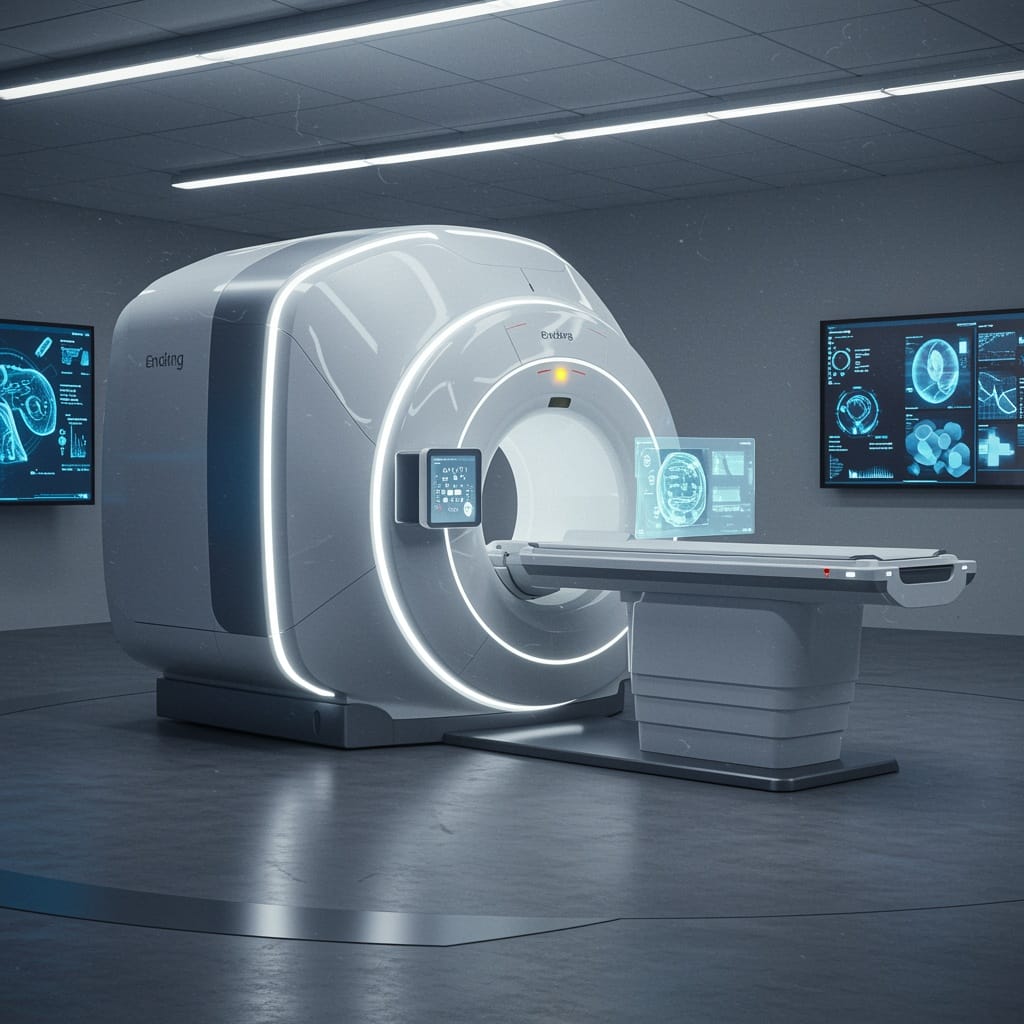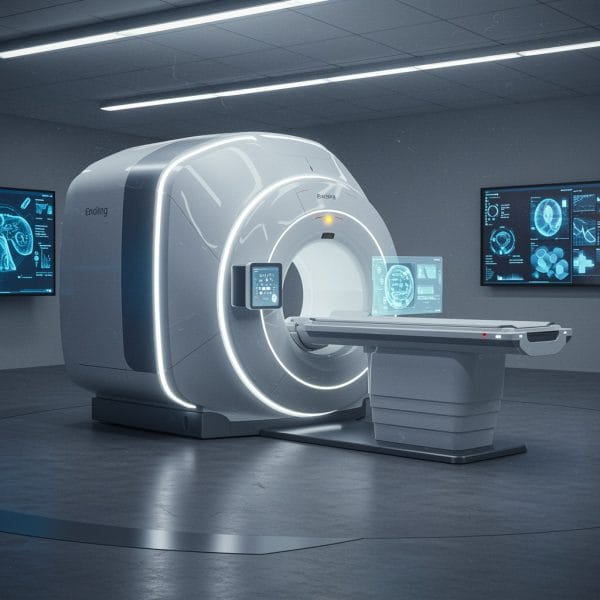Mobile Imaging Trends
Medical imaging isn’t what it used to be; it’s faster, more portable, and better connected than ever before. Technological advances are making high-quality scans available in incredibly rural areas. Lighter, helium-free MRI machines are solving supply chain issues. Cloud-based imaging services are bridging the gap between specialists and remote providers.
Here are six of the most prevalent mobile imaging trends that we see playing a big role in 2025:
1. Artificial Intelligence
AI is now built into handheld ultrasound devices and portable CT scanners, helping healthcare workers detect issues faster. Real-time image analysis is cutting down on the time it takes to identify abnormalities and helping predictive AI gain ground. AI systems have also been used to analyze imaging data alongside patient history to detect early warning signs, allowing providers to intervene before conditions escalate into emergencies.
2. Theranostics
Some imaging devices now do more than just capture images; they help guide treatment as well. Theranostics—the combination of using one radioactive drug to diagnose and a second to deliver drug therapy— is changing how conditions like cancer and neurological diseases are managed. Mobile PET/CT scanners equipped with targeted radiopharmaceuticals are making it possible to diagnose and treat patients in one step.
3. Mobile Imaging Technology
The days of bulky imaging equipment being confined to hospitals are over as trends in mobile imaging are shifting toward smaller, more powerful devices. Handheld ultrasound scanners are already in ambulances and rural clinics, while lightweight X-ray machines are reducing patient transfers. One of the biggest shifts in MRI technology is the move away from helium-based cooling systems. Helium-free MRI machines are smaller, more affordable, and easier to install in non-traditional locations.
4. Remote Imaging Services
Not every medical facility has a radiologist on-site, but that doesn’t mean they can’t access expert readings. Remote imaging services are filling that gap by making it easier for specialists to review scans from anywhere, as cloud-based platforms are speeding up consultations and connecting providers across distances.
Teleradiology isn’t new, but it has become smarter with the implementation of AI. Automated systems can now sort scans by urgency, pushing critical cases to the top of the queue. This reduces wait times and makes sure that high-priority patients get attention first.
5. Sustainability and Energy Efficiency
Modern medical imaging equipment has traditionally been resource-intensive, but more hospitals and clinics are choosing to upgrade existing machines instead of replacing them outright. This helps healthcare systems reduce electronic waste and save money.
As sustainability becomes a bigger factor in healthcare decision-making, providers can expect to see more innovation in energy-efficient imaging. For example, helium-free MRI systems are being developed to address the helium shortage and are just one example of how manufacturers are producing more sustainable machines.
6. 3D and 4D Imaging Technologies
3D and 4D imaging systems are making it easier to assess moving structures like the heart, lungs, and joints, meaning that static images give way to real-time visualization. In obstetrics and gynecology, fetal monitoring has improved with 4D ultrasound and provides a clearer view of development. In cardiology, real-time imaging is giving specialists a better look at blood flow and heart function.
These systems aren’t just improving diagnostics; they’re making treatments more precise as portable 3D imaging is being used for surgery planning, and advanced volumetric imaging is helping guide minimally invasive procedures. More providers are benefiting from more detailed scans, which have greatly increased patient outcomes.
Contact Platinum Mobile Imaging Today
If your facility is looking for a cost-effective way to expand imaging services without major infrastructure changes, Platinum Mobile Imaging is here to help.
Our mobile imaging solutions provide fast, reliable diagnostics in almost any setting; from hospitals and urgent care centers to rural clinics and mobile units, we have a solution for you!
Not sure if mobile imaging is the right fit for you? Give us a call today!



